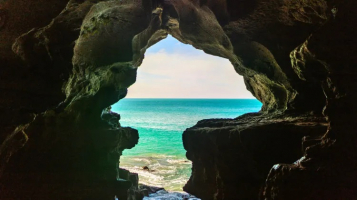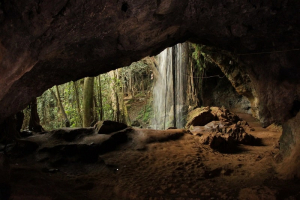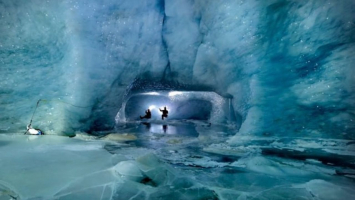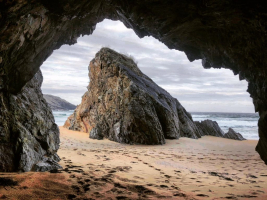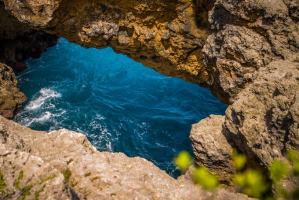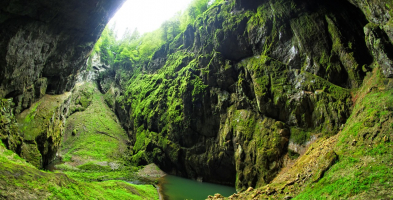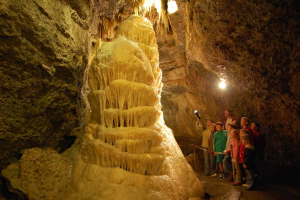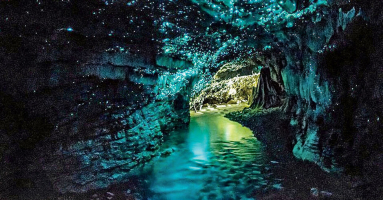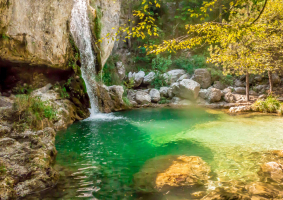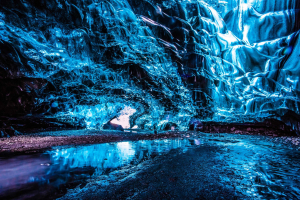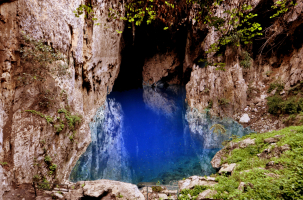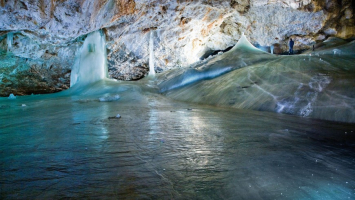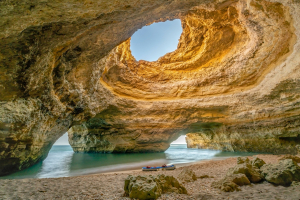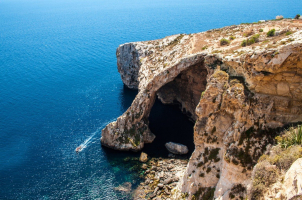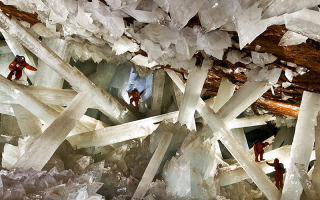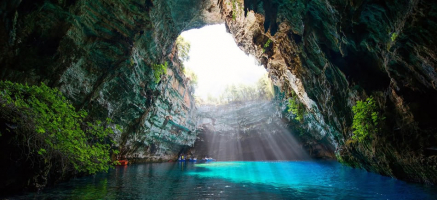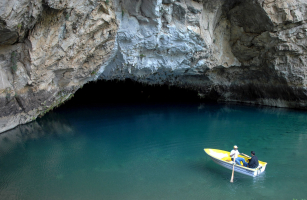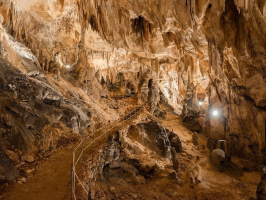Top 10 Most Beautiful Caves in Greece
There are over 8,500 caves in Greece (3,000 in Crete alone), and they are excellent places to learn about Greek history and mythology. There's a cave where ... read more...Zeus was born, and another where a lovely nymph lives. One is even said to house a poisonous gas-breathing dragon! Some caves have been used for thousands of years as places of worship, while others were used by villagers to hide from the Nazis. Every cave in Greece has a story to tell, and each one is more fascinating than the last. The Most Beautiful Caves in Greece is listed below.
-
The Cave of St. George is the city of Kilkis' main tourist attraction; it is one of Greece's most remarkable caves and provides visitors with a one-of-a-kind experience. Especially if combined with a visit to the Paleontological Museum, which houses the cave's discoveries. It is located at the foot of St. George's Hill and was discovered by quarryman George Pavlidis (Boulasiki) by accident around 1925 when he opened its entrance while working in the quarry. Mrs. Anna Petrocheilou, President of the Greek Speleological Society at the time, mapped the cave for the first time in 1960. Under her supervision, the recovery operations began in 1977 and lasted six years.
The Cave of St. George's most notable feature, which has spread its fame beyond Greek borders, is that it is medically indicated as suitable for the treatment of respiratory diseases. Following a relevant study, the cave of Kilkis has proven to be ideal and has accumulated all of the conditions as a cave-therapy center, with beneficial effects in cases of chronic respiratory diseases (asthma) and with especially good results in children, in the treatment of skin diseases from allergic infections, and in the overall rejuvenation of the human body. The absence of ozone and dust, the absence or presence of microorganisms, the presence of an acidic environment, calcium, magnesium, and a variety of other physical and chemical factors all help in all of the above cases.
Location: the foot of St. George’s Hill in Kilkis in northern Greece
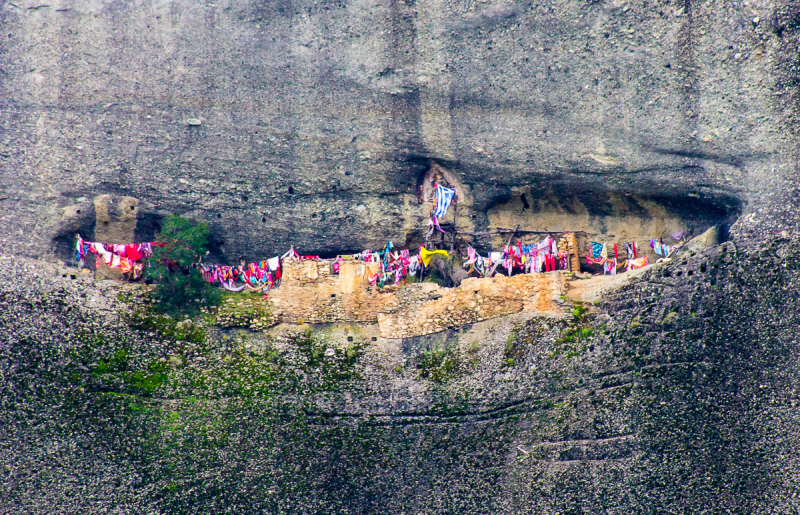
visitmeteora.travel 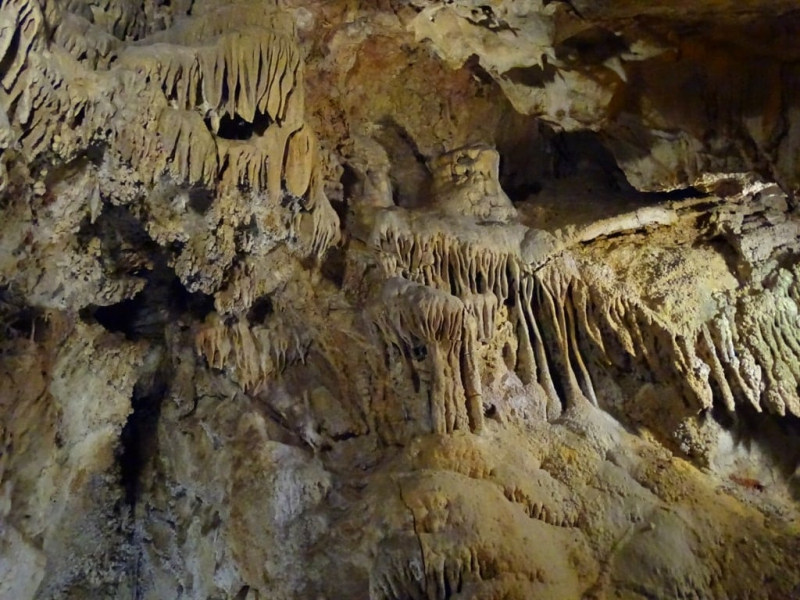
visitmeteora.travel -
The Diros Caves are one of Greece's most important natural sites; the truly spectacular cave complex is located in Laconia, on the southeastern tip of the Peloponnese peninsula. A visit to the caves is like traveling back in time to the Neolithic period or entering a fairytale.
The Diros complex is made up of the caves of Vlychada, Alepotrypa, and Kataphygi. The caves formed hundreds of thousands of years ago, and the stalactites and stalagmites that are now underwater formed when sea levels were much lower than they are now. Stalactites have been discovered at a depth of 71 meters, while the cave's maximum depth has been discovered off the tourist route, and is 80 meters. The Hellenic Speleological Society's founders, Ioannis and Anna Petrochilos, were the first to conduct a systematic exploration of Vlychada, the complex's main cave, in 1949. Visitors were first permitted to enter the caves in 1967, six years after the Greek National Tourism Organization (GNTO) completed the visitor accommodation works that had begun six years earlier.
Location: Pyrgos Dirou, Greece
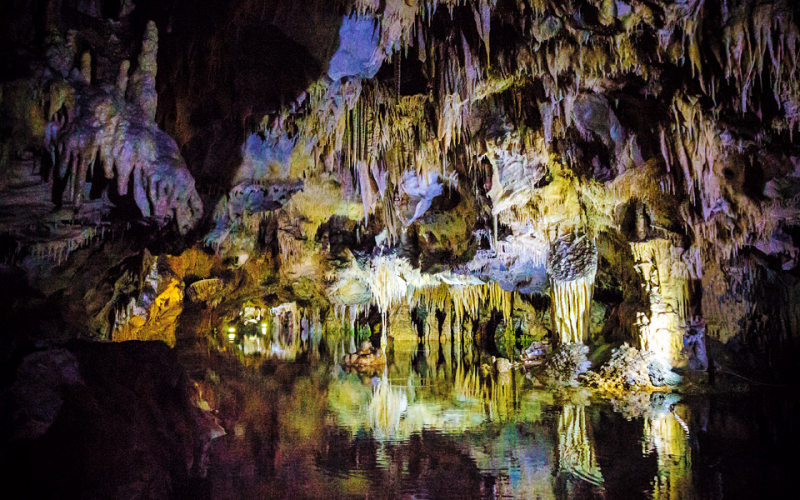
greecetravel.com 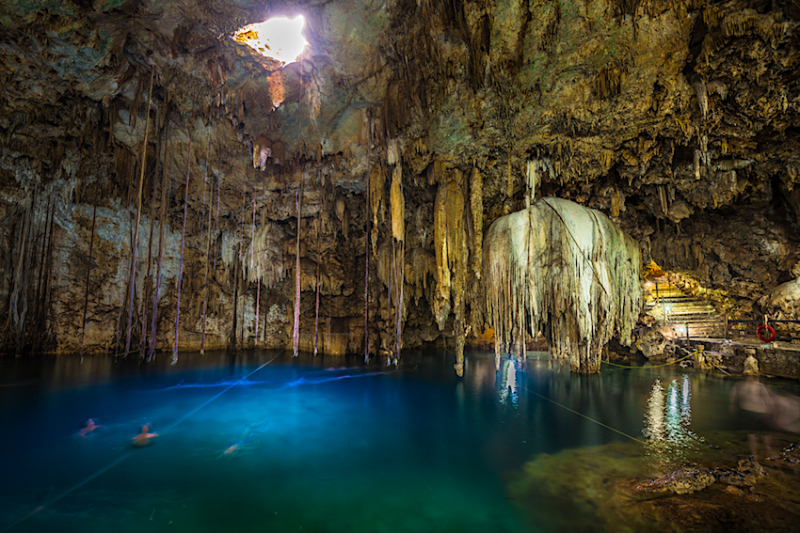
greecetravel.com -
The Anemotrypa cave is three kilometers west of Stroggoula and at an elevation of 900 meters (2,953 feet). The uniquely sculpted, colored stalagmites, as well as the three lakes formed over the years in shades of gray, brass, and white, create a one-of-a-kind, dreamy landscape.
The cave interior was discovered in 1960, according to voreiatzoumerka.gr. On the occasion of the arrival of the late Anna Petrocheilou, Honorary President of the Hellenic Speleological Society, two young men, Apostolis Lambris and Georgios K. Karakostas, were told by the community chief to open a larger slit in the rocks from which cool air was emanating in order to explore its interior. The two men crawled for about 10 meters (30 feet) when they came across a large pit, but the lack of light prevented them from continuing their search. Following that, a section of the cave – about 270 meters (886 feet) long – was studied and explored, and by the year 2000, the cave was open to visitors. There is a pond inside the cave that is completely blue — not because of its depth, but because of the quartz crystals at the bottom.
The cave is divided into three levels. The highest and oldest have collapsed in the past, and only a portion of it has been preserved. The third and lower level is the underground riverbed, which can be seen at the end of the visitors' trail, just before it creates a two-meter waterfall. The visitors' section is 250 meters long (820 feet). The unique stalagmites are exceptionally beautiful, forming curtain-like formations that add to the eerie atmosphere.
Location: Parramatta, Greece
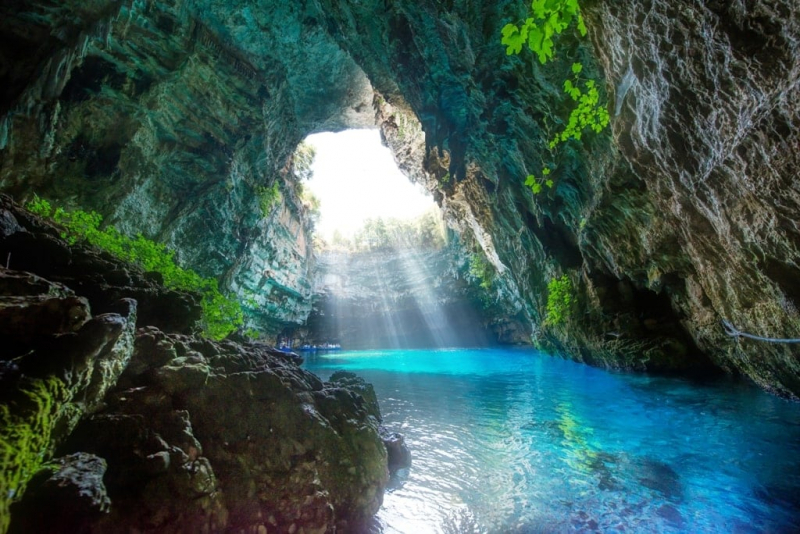
greecetravelideas.com 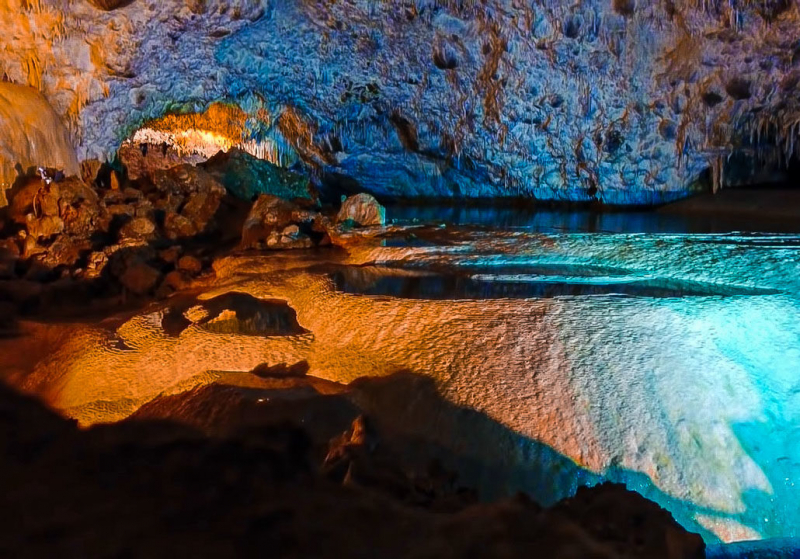
greecetravelideas.com -
The Dikteon Cave (or Dikteon Andron) is one of the Most Beautiful Caves in Greece and is well-known for Crete's 3,000 caves and Greece's 8,500 caves. According to legend, Zeus was born in the magnificent Dikteon Cave, which is rich in stalagmites and stalactites. This is why the Dikteon Cave was already famous in antiquity, dedicated to the worship of the greatest of the gods, as evidenced by the numerous offerings discovered there. Today, the Dikteon Cave attracts a large number of visitors, who are no longer worshipers but rather travelers from all over the world. According to legend, Rhea gave birth to Zeus in this cave to protect him from his cannibal father, Cronos. Today, visitors can see numerous rock formations around a lake. There are two trails leading to the cave from nearby Psychro, one shaded and one sunny.
The Dikteon Cave is located at an elevation of 1025 meters on the northern slopes of Mount Dicte, which dominates the Lassithi Plateau and the entire island of Crete. Because the cave is close to the village of Psychro, it is also known as Psychro Cave. Follow the paved path with oak trees on either side from Psychro. For the more daring, there are donkeys at the beginning of the path that will take you up to the Dikteon Cave. At the end of the short path, just before the cave entrance, it's worth pausing to catch your breath, take in the panoramic view of the entire plateau, and breathe in the fresh mountain air scented with thyme, sage, and other aromatic herbs native to the area. It's a wonderful feeling, making you believe that the Dikteon Cave was not chosen by chance as the site of such a significant event as the birth of Zeus, Father of the Gods of Olympus.
Location: Lasithi, Crete, Greece
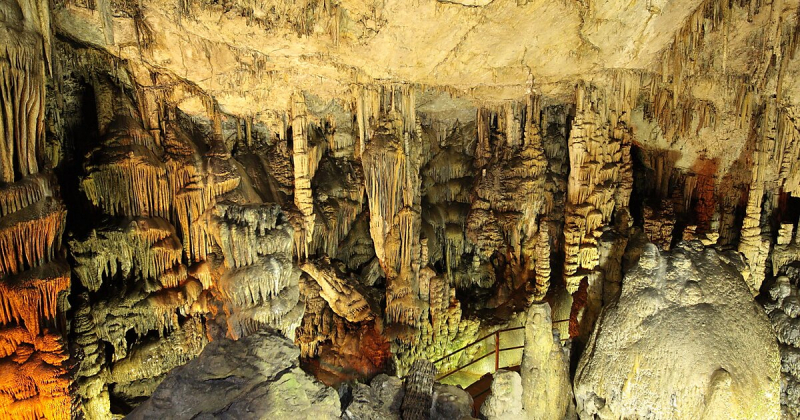
travel.sygic.com 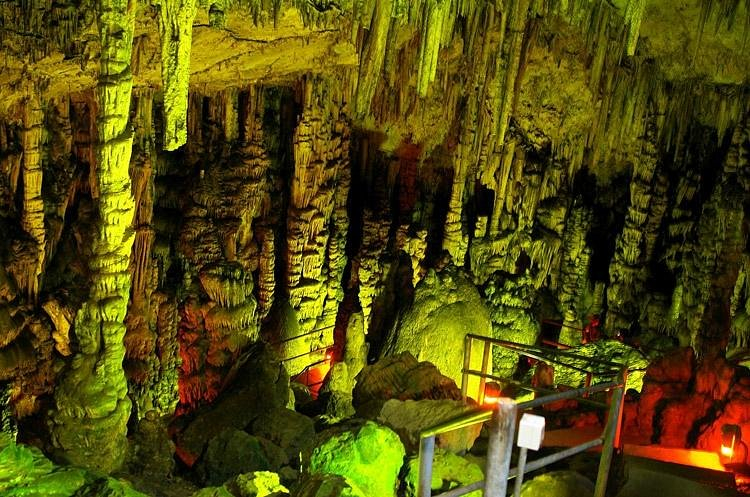
travel.sygic.com -
Legend has it that the Cave of the Dragon was once a gold mine guarded by a dragon who breathed poison to keep anyone from entering. The cave opened in 2009 to anyone brave enough to brave the dragon's fumes, and no one has yet been poisoned. Seven underground lakes and ten caverns of varying sizes are linked by corridors and tunnels. The cave is of paleontological interest, and bare bones estimated to be 10,000 years old have been discovered there.
Adaptations to the cave to make it more accessible for visitors, as well as the arrangement of the surrounding area and the construction of buildings for the site's operation, were carried out using minimally invasive methods. This was especially important for work inside the cave, in order to preserve the spectacular stalactite formations. External structures were built in accordance with local architectural traditions, using local stone and wood and featuring ceramic decorations. The project's goals were to preserve the cave while also capitalizing on its tourist potential. It has been successful in this regard. The number of visitors has steadily increased, from around 29 000 in 2013 to nearly 34 000 by 2017. Furthermore, by improving Kastoria's tourist offering, the project has boosted the local economy.
Location: Kastoria, Greece
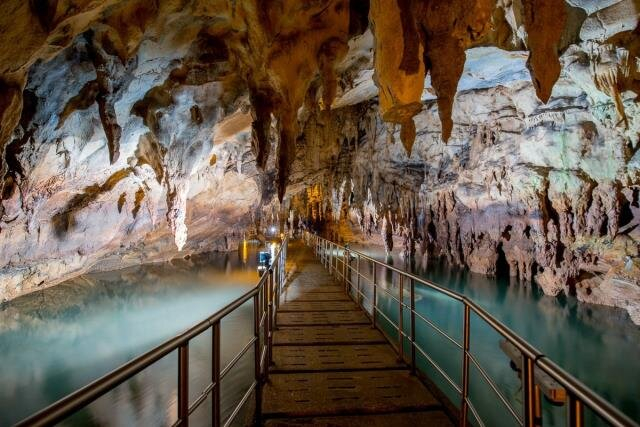
greecehighdefinition.com 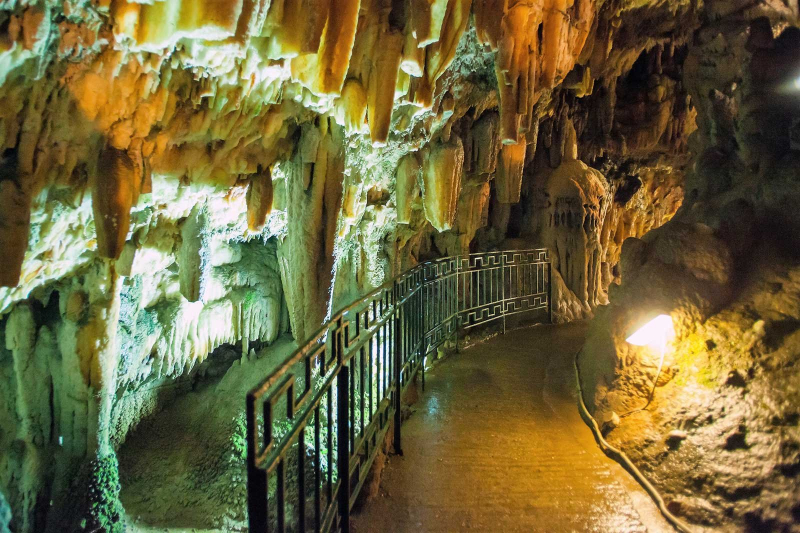
greecehighdefinition.com -
The Kefalonian Drogarati Cave was discovered 300 years ago and opened to the public in 1963. When a strong earthquake caused a collapse, the cave's entrance was revealed. Drogarati is an impressive cave with amazing stalactite and stalagmite formations. According to speleologists, this cave is approximately 150 million years old and represents a rare geological phenomenon. The cave is approximately 60m deep and maintains a constant temperature of 18°C. The cave's humidity level reaches 90%. Despite the fact that it has been severely damaged by earthquakes, stalactites still hang from the roof and form amazing shapes. As water drops fall onto these shapes and solidify, they give them a new shape over time, slowly but steadily.
Drogarati Cave is divided into two sections. The tourist section consists of a long corridor leading to the Royal Balcony, a natural platform of stalactites that beautifully reflect light. The visitor can then see the Chamber of Exaltation, which has excellent acoustics. This chamber is the cave's largest hall; it can hold 500 people and is sometimes used for cultural events. To get from one area to the next, you must pass through colored columns and a small lake.Location: Sami, Greece
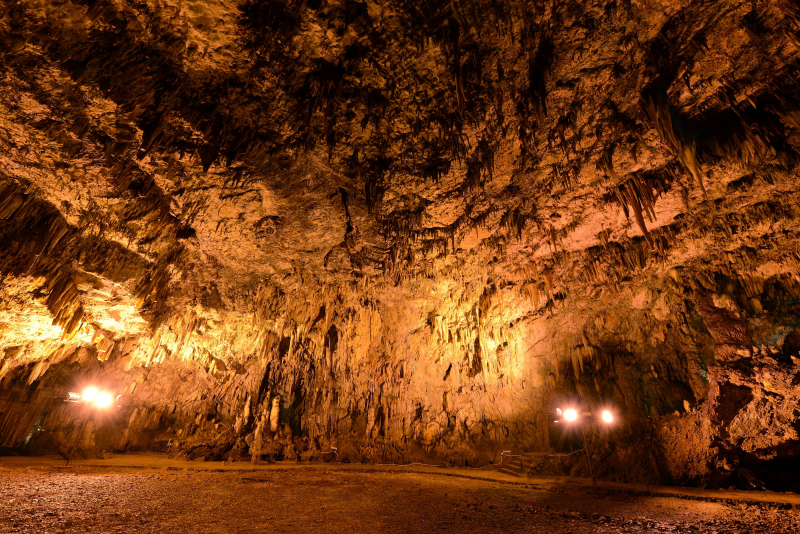
greeka.com 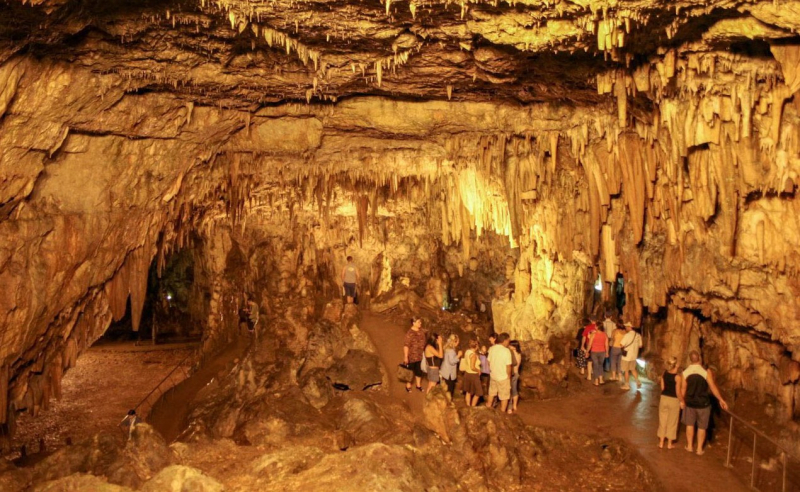
greeka.com -
The Cave of Melissani, located just outside Sami, has an odd allure. It is one of the Most Beautiful Caves in Greece tourist destination. Surprisingly, there is a lake inside the cave, surrounded by trees and forests. The cave itself is B-shaped, with two chambers or halls separated in the center by land or an island. One of the halls' roofs caved in centuries ago, allowing sunlight to enter. The lake's depth ranges from 20 to 30 meters. When the sun is directly overhead at noon, the sunlight reflecting off the turquoise-blue waters creates a magical illusion, and the entire Cave of Melissani appears to be illuminated with blue light.
Many artifacts dating to the third and fourth centuries BC that were used during the post-classical and early Hellenistic periods were discovered during excavations conducted in 1951 and later in 1962. This legend has been validated by the discovery of nymph figures. Small boats ply the lake inside Melissani's Cave. The cave is 36 meters high, 40 meters wide, and 3.5 meters long. A balcony was built on top of the cave to provide tourists with a spectacular view of the inside.
The first chamber is lit by the sun, while the second is dark and filled with stalactites covered in algae and moss. Despite their size, they are dwarfed by the massive dome. Surprisingly, many of the stalactites resemble dolphins, the nymphs' companions and messengers, according to legend. This chamber is illuminated by electric lights. The lake's water is a mix of freshwater and seawater. It is about 500 meters from the sea, and the water is 1 meter higher than the sea level. The brackish water flows into the Cave of Melissani from one end and out the other. The springs gushing beneath the 30m-deep water inside replenish the water.
Location: Sami, Greece
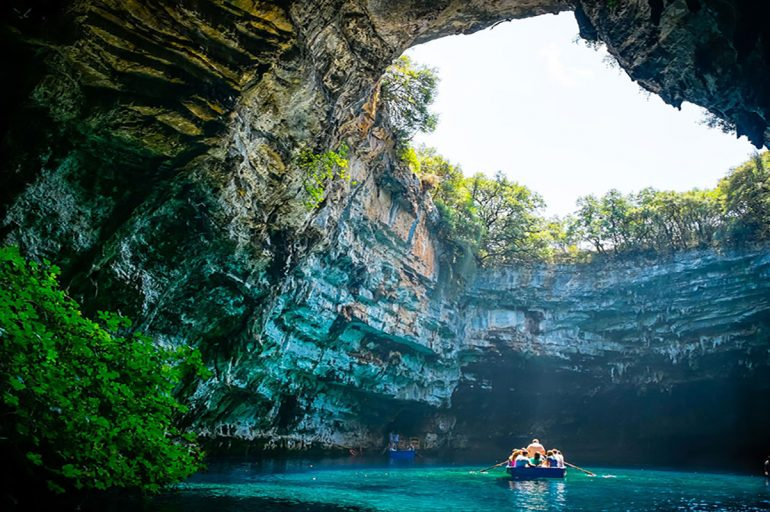
sworld.co.uk 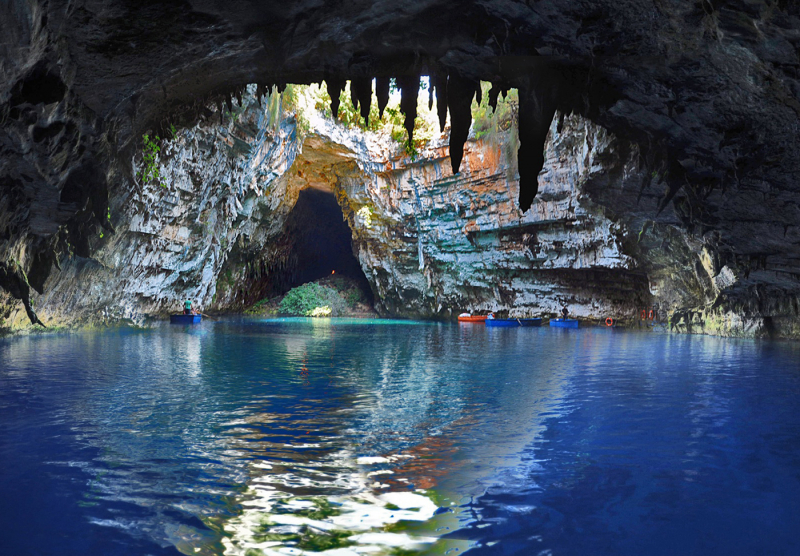
sworld.co.uk -
Zakynthos is one of the largest Ionian Sea islands. Apart from Corfu, it is the second most visited island. Zakynthos' lands are quite mountainous, and the island, like the other Ionian islands, has a number of fertile valleys and green plains that depict superb landscapes. Their coasts are long, measuring 123 kilometers, and very craggy and rocky in the north. The beaches in the southern area, on the other hand, are sandy and feature a number of gulfs, such as the Laganas gulf. The beauty of this area boosts the tourism industry to the point where it has become an extremely popular destination.
However, one of Zakynthos' most stunning views can be found on the island's west coast: the blue caves. They are also known as the Volimes Blue Caves, after the picturesque village in which they are located. This area is much wilder, more rural, and less traveled than the previous ones. In fact, the blue caves can only be reached by sea. Despite this, they remain one of the main attractions on this Greek island, particularly at certain times of the day.
The largest cave is known as Kianoun, and there are many boats available for rent in the town port for tourists to visit the blue caves. The blue caves are distinguished by the vibrating and striking blue color of the waters within them, which capture and reflect the shine of the clear sky reflected on their surface. This cascade of bright reflections creates an almost magical atmosphere, which is best appreciated at sunrise or sunset. The blue caves also have interesting arches formed by erosion over thousands of years, allowing visitors to walk through these caves and be immersed in this surreal environment. Apart from being surrounded by the cave's arches, there is one way to be a part of that magnificent scenery: the blue caves are obviously a soft spot for those who enjoy diving.
Location: Agios Nikolaos Shinari, Greece
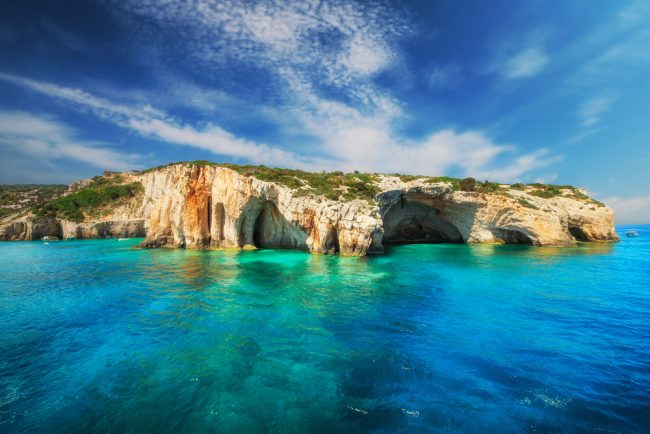
greeka.com 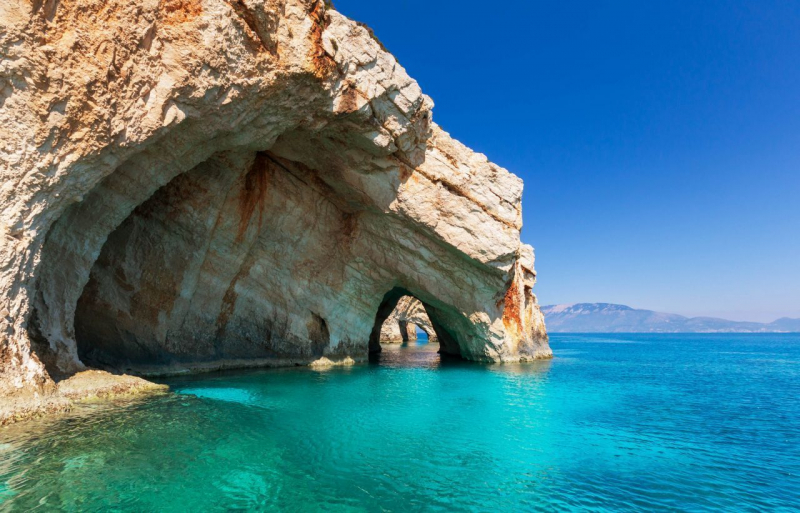
greeka.com -
Archaeologists believe the Cave of Papanikolis was once a submarine hideaway. It is teeming with caves. Papanakolis Cave is conveniently located on the island of Meganisi, just 12 nautical miles from Nydri village in Lefkada. The best way to get to the cave is to take a boat cruise from Nidri, which takes about 45 minutes. This cave rose to prominence during World War II as a secret hideaway for the submarine Papanikolis. The cave's sheer size is mind-boggling. After its blitzkrieg on the Italian armada, the Papanikolis submarine is thought to have tucked itself away inside this massive cave. First-time visitors will have an amazing time.
The incredible Papanikolis Cave is Greece's second-largest cave. It is a karst cave, not a true sea cave, and is currently partially submerged by the sea. The ships that would drop anchor inside the cave during periods of bad weather preferred this cave. Even large shipping vessels with flagstaffs could easily fit into this cave. In fact, Levkas is merely a modernized version of the historic name Leukas, which literally means "white." When viewed from the Mediterranean Sea, the entire island is white. This is because a large portion of the coastline is made up of white limestone cliffs. Papanikolis Cave is located on one of these white cliffs and is notable for its massive gateway to the southwest. The cave turns right just behind the gateway and extends to the southeast. At the far end, there is a miniature beach, and visitors can approach it on small-sized boats and enjoy leisurely beach strolls.
Location: Vathy, Greece
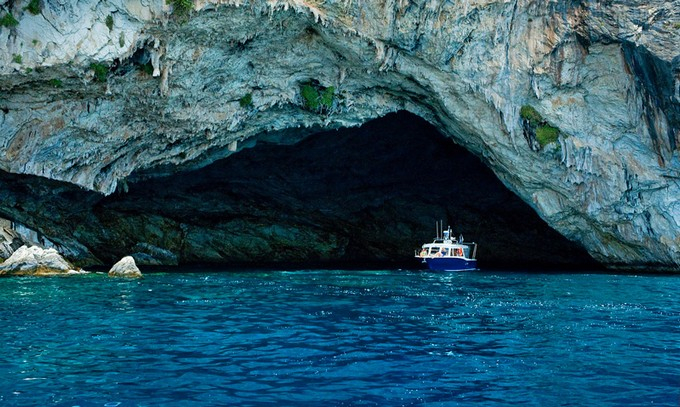
villadeewelina.com 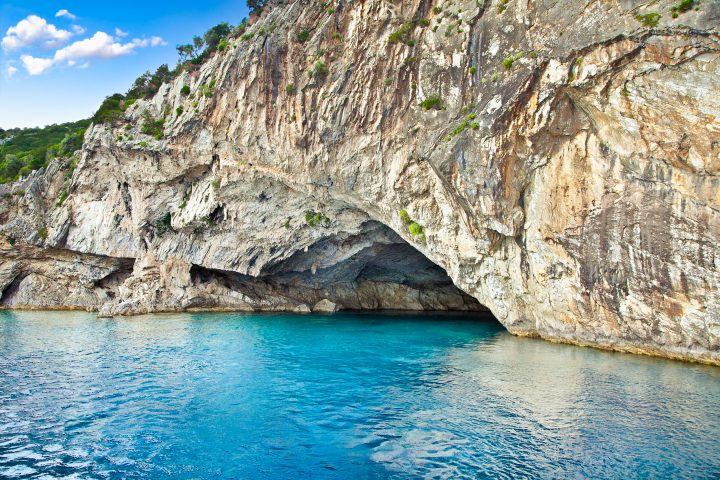
villadeewelina.com -
Alonissos is one of the Aegean Sea's four inhabited Sporades Islands. Its most impressive attraction is arguably the Blue Cave. The cave is situated between Strovili and Lalarias, two remote beaches on the island's northeastern coast. In addition to taking a boat ride to appreciate the beauty of the Blue Cave, you can also go scuba diving in the cave. It's a fantastic experience.
Alonissos island's wild and rocky coastline is endowed with many small and amazing caves with deep and blue waters that captivate every visitor. The Blue Cave, located on the northeastern side of Alonissos, between the remote beaches of Strovili and Lalarias, a few kilometers north of Agios Dimitrios village, is the most well-known. Every day, excursion boats depart from Patitiri village for the surrounding beautiful islets and remote caves. The water surrounding the Blue Cave is so clear that it reflects the surrounding wild rocks. This is a beautiful and impressive location to visit. The boats that arrive usually go inside the blue cave, where tourists can go for some nice dives. You will undoubtedly have a one-of-a-kind experience.
Location: Agios Dimitrios, Greece
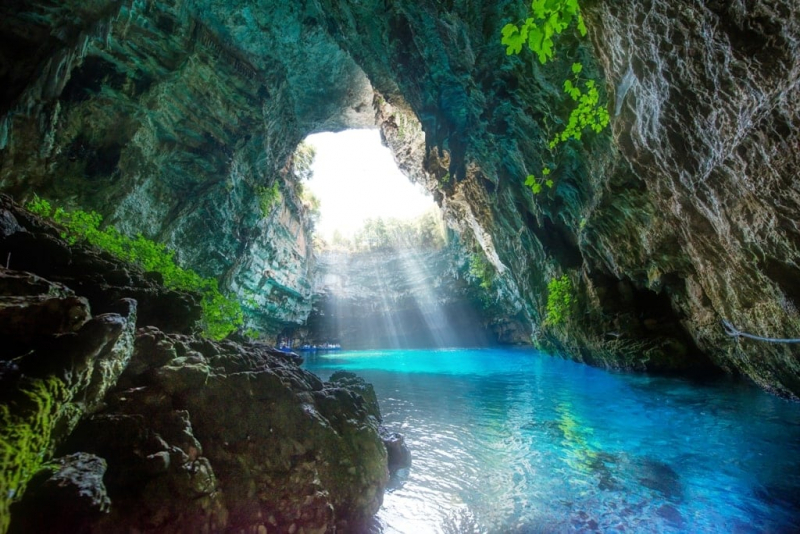
greeka.com 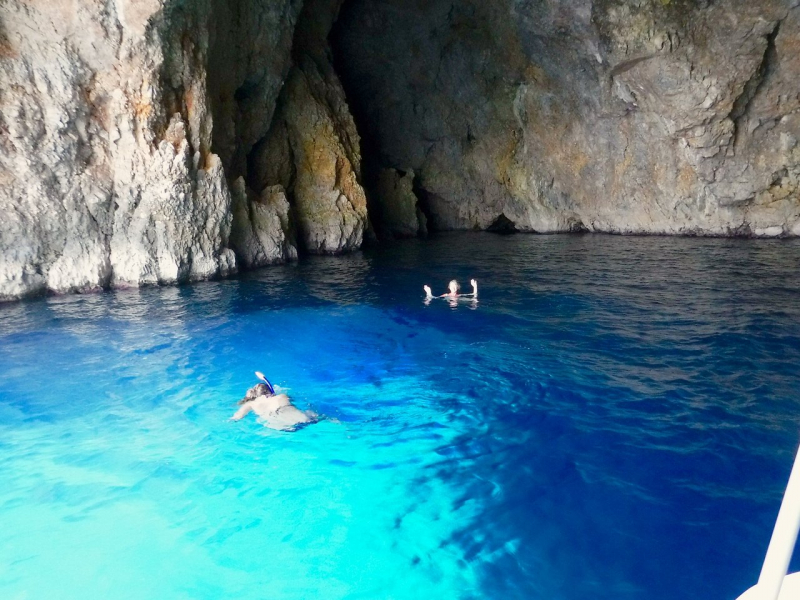
greeka.com












